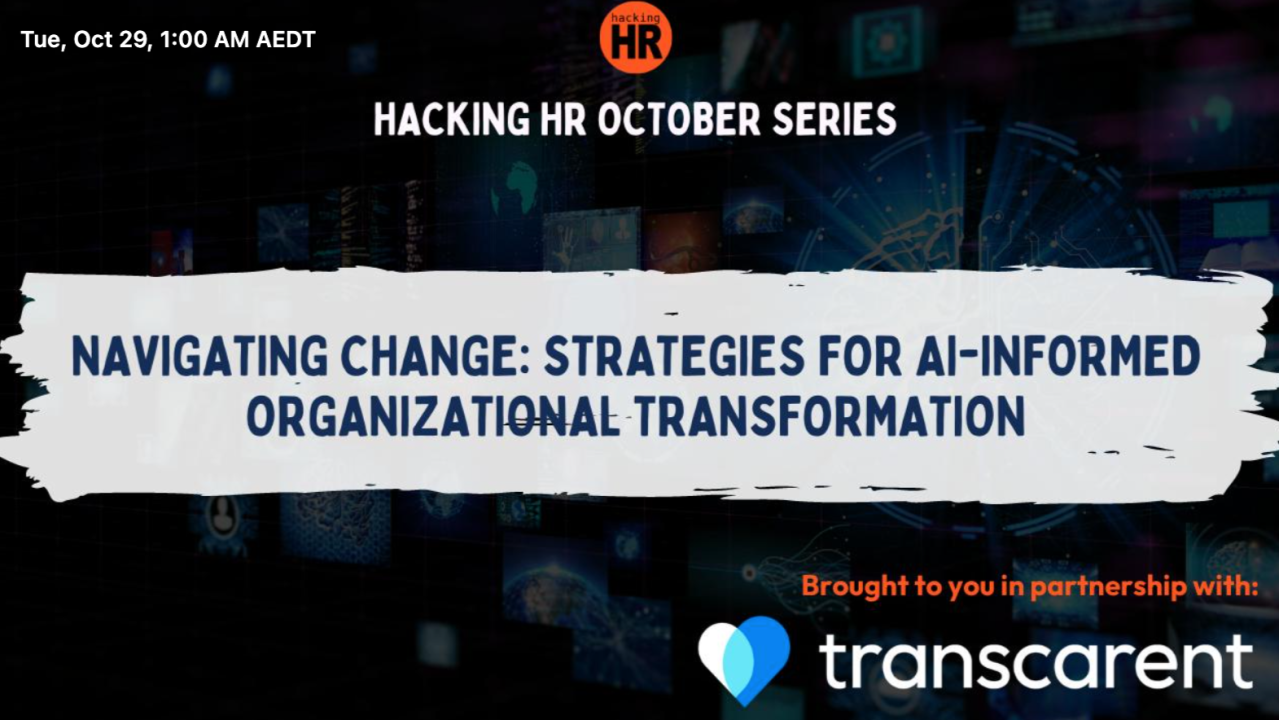
Navigating Change: Strategies for AI-Informed Organizational Transformation
Rod Hutchings
Project & Program Management Director | 15+ Years Driving Large-Scale ICT Technology Transformations | PMP, PRINCE2, Agile Certified (ICP-ATF, ICP-ACC, SAFe)
As AI continues to revolutionize industries, organizations are increasingly faced with the need to adapt and transform. However, AI-driven change isn’t just about adopting new technologies—it requires thoughtful change management to ensure successful and sustainable integration. For HR leaders and business executives, understanding the role AI plays in organizational transformation and how to effectively support employees through these changes is critical.
In this blog post, we'll explore the key strategies needed to navigate AI-informed organizational transformation, focusing on the questions that matter most:
1. How Can AI Facilitate Organizational Transformation?
AI has the potential to drive profound organizational change by automating tasks, improving decision-making, and enhancing operational efficiency. By analyzing large datasets, AI can provide predictive insights that help businesses anticipate market trends, streamline processes, and personalize customer experiences. Additionally, AI can support employee performance by automating routine tasks, allowing teams to focus on higher-value activities that drive innovation and growth.
However, for AI to facilitate organizational transformation successfully, it must be integrated thoughtfully into business processes. This means aligning AI initiatives with the company’s strategic objectives, ensuring that the technology is not just a standalone tool but an enabler of broader organizational goals.
2. What Are the Common Challenges Organizations Face When Implementing AI-Driven Changes?
The path to AI integration is not without its challenges. Organizations frequently encounter:
Addressing these challenges requires a clear communication strategy, a commitment to upskilling, and a focus on ethical AI practices.
3. How Can HR Leaders Support Employees Through the Transition?
HR leaders play a pivotal role in navigating the human side of AI-driven organizational transformation. The key to successful AI integration lies in supporting employees throughout the change process by:
4. What Are the Best Practices for Ensuring a Smooth and Sustainable AI Integration?
To ensure a successful and lasting AI integration, organizations should focus on the following best practices:
Top Three Learning Objectives
By understanding the strategies outlined above, HR leaders and executives can achieve three key learning objectives:
Five Key Competencies to Develop
To ensure successful AI-informed transformation, organizations must develop the following competencies:
Conclusion
AI has the power to revolutionize organizations, but its potential can only be realized through careful planning and thoughtful change management. By focusing on employee support, clear communication, and strategic alignment, leaders can ensure a smooth and sustainable AI-driven transformation. With the right approach, AI becomes a tool not only for efficiency but for innovation and growth, empowering employees and driving long-term success.
领英推荐
Want to learn more:
Our upcoming Hacking HR panel, Navigating Change: Strategies for AI-Informed Organizational Transformation, brings together industry experts who are uniquely positioned to guide you through the complexities of AI integration and organizational change.
Our esteemed panelists will share their deep knowledge, experience, and practical insights on how to implement AI-driven transformation strategies while maintaining a people-first approach. This panel will dive into the key aspects of AI integration, from change management to employee support, and we encourage you to join the conversation to explore the best practices for ensuring a smooth and sustainable AI transition in your organization.
Meet the Experts:
Angelique Hamilton Chief Culture & People Officer, CEO, HR Chique Group Angelique brings years of experience leading HR transformations with a focus on culture and employee engagement.
Charmaine Green-Forde Founder and CEO, Chapter t00, LLC Charmaine’s leadership in organizational change and transformation stems from her extensive background in executive coaching and business consulting.
Anna Mamalaki VP of AI Organizational and Workplace Transformation, AI-IA: Artificial Intelligence In Action As a VP specializing in AI-driven workplace transformation, Anna brings unparalleled expertise in leveraging AI to reshape organizational structures and processes.
Why You Should Join the Panel:
This session is a must-attend for HR leaders, executives, and anyone interested in navigating the challenges of AI-driven organizational transformation. You’ll walk away with practical strategies to help your organization harness the power of AI while keeping your workforce engaged and empowered.
Share Your Questions:
Have specific questions or topics you’d like our panel to explore? We want to hear from you! Whether it’s about overcoming resistance to AI adoption, managing employee transitions, or aligning AI with business goals, we’ll ensure your questions shape the conversation. Feel free to send us your questions ahead of time, and we’ll incorporate them into the discussion.
Don’t miss out! Register now to secure your spot and be part of this dynamic conversation on how AI is transforming the workplace. This is the link for people to register in the event as participants: https://hackinghrlab.io/events/artificial-intelligence-hr/
Rod Hutchings
Applied Information Management Solutions Pty Ltd
Originally Posted Here:
Project & Program Management Director | 15+ Years Driving Large-Scale ICT Technology Transformations | PMP, PRINCE2, Agile Certified (ICP-ATF, ICP-ACC, SAFe)
1 个月Other AI panels that I am moderating in October are shared here: https://www.dhirubhai.net/posts/rodhutchings_hackinghr-activity-7245959791628460032-xLOq?utm_source=share&utm_medium=member_desktop
The only CSM coach who ACTUALLY IS A CSM (not retired) ? I help underpaid and laid off CSM's get Customer Success Jobs WITHOUT networking via my F.I.R.E framework ?? ? $9.6M in Salaries ? 96 success stories ?? Proof ??
1 个月Practical insights from diverse experts. Engaging format. Focused, relevant. Rod Hutchings